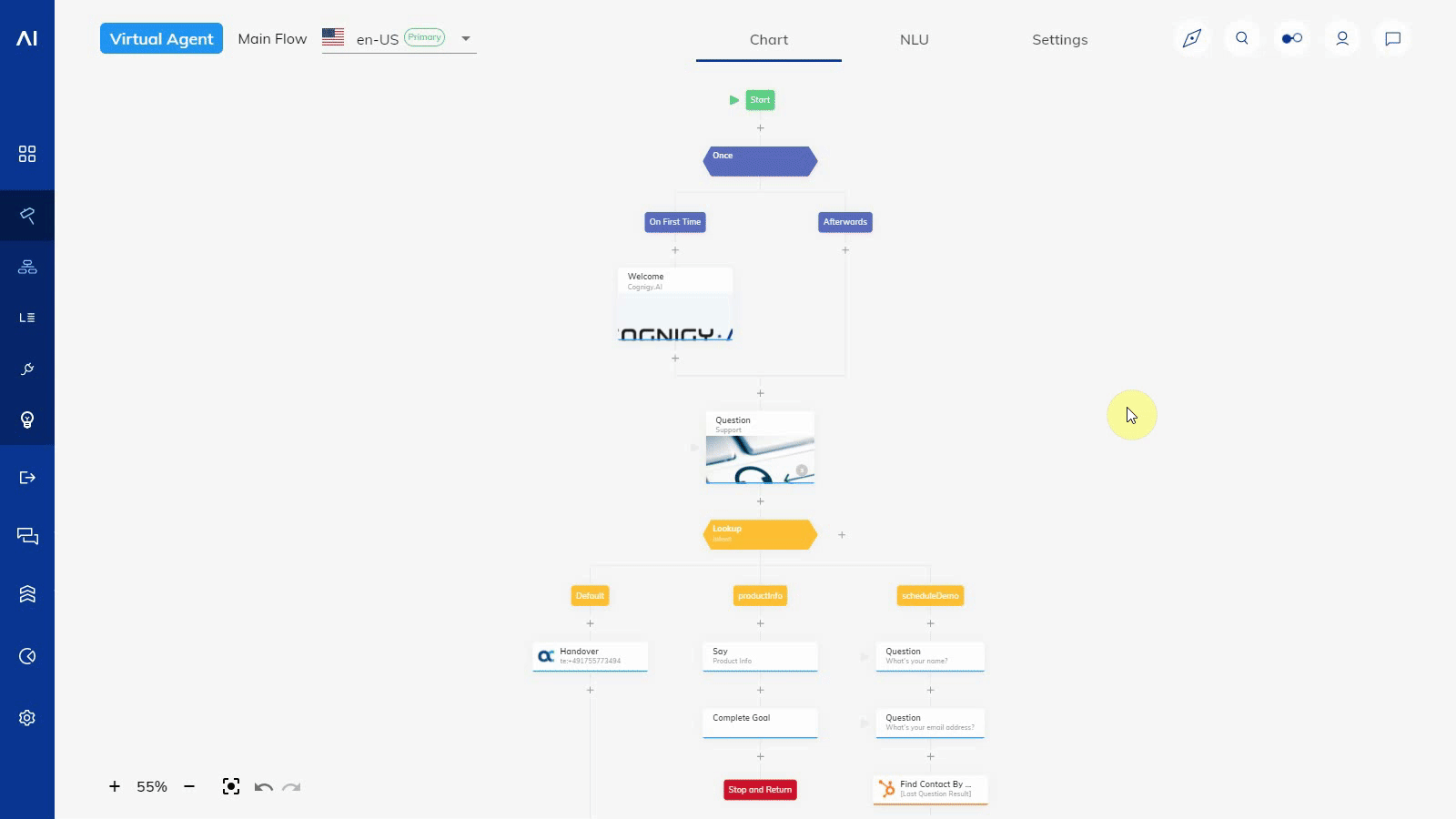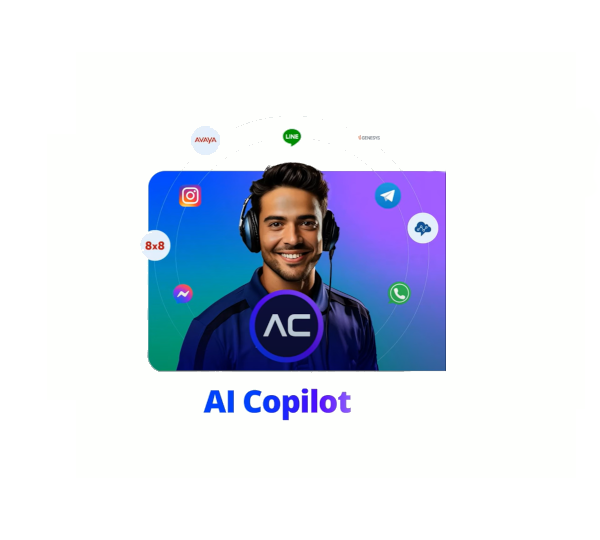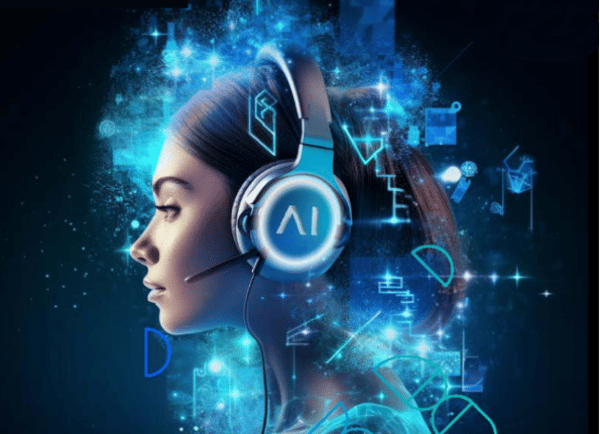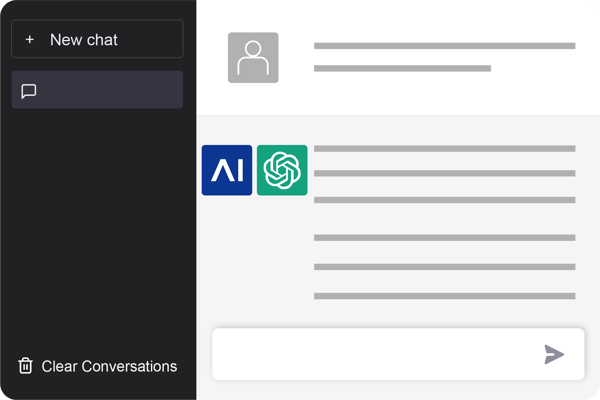Figuring out how to reduce customer waiting time can ensure you retain loyal customers by addressing their concerns as quickly as possible. Speedy resolutions can also minimize the impact a crisis has on your business and allow you to analyze customer feedback that makes your operation better.
What is AI?
AI stands for artificial intelligence and here, it references a chatbot that triages customer complaints and inquiries. Virtual agents are one evolution of AI chatbots that are advanced enough to engage with customers on different channels such as:
- Websites
- Messaging apps
- Mobile apps
- Social networking sites
Virtual agents and AI chatbots were not widely used until just a few years ago. But in 2018, Gartner estimated they would integrate into 25% of customer service operations by 2020. Organizations that utilize this technology already see up to a 70% reduction in customer inquiries by phone, chat, and email, but customer satisfaction is up 33%.
Why should you use AI?
In 2017, Accenture surveyed almost 25,000 consumers worldwide to find out what their preferences and beliefs were in hopes that companies could use that information to thrive. Their report found that consumers had higher expectations in general, but 50% of them didn't care if they dealt with a human, virtual agent, or AI chatbot when they needed assistance.
This creates an ideal opening for AI chatbots and virtual agents who can promptly assist customers and maintain a high satisfaction rate without taking up your employees' valuable time. Customers also expect 24/7 support in many cases, and using AI dramatically reduces the cost of providing this service.
Suppose your target customers include individuals aged 18-34. In that case, you can target your retention efforts for higher revenue as this age group is more likely to switch service providers when they don't get the digital experience they want. We see the most target customers leaving to use competing services in internet service, retail, and banking.
Six tips to reduce wait times with AI
If you're wondering how to reduce customer waiting time, using AI is the route that most companies are taking. Many companies that used to have dedicated apps will likely pull them in the upcoming years as the return on investment isn't as expected.
To ensure the best equipped AI for minimizing customer wait times and serving your customer base best, we recommend these tips for providing the best AI experience.
1. Make sure the engagement is instant and professional
When a customer reaches out online, you want to make sure the AI chatbot is waiting to respond immediately. This immediate response makes the customer feel heard and valued, which means they are more likely to leave feeling satisfied.
This interaction is also the time to use proper marketing language and communicate clearly and openly with your customers. Customers that need help troubleshooting an issue also need to understand the timeframe that troubleshooting will take. If you're selling a product, you can also let them know about delays or when they can expect to receive their purchase.
2. Make AI assistance and live chat seamless
Virtual agents can reduce customer wait times by ensuring that your customers have access to the information they need immediately. But, there will be a time where an actual human needs to step in to help. Making the AI and live chat session seamless not only produces a better experience for the customer but also minimizes wait time and resolves issues faster.
Virtual agents are an excellent option if holding times for speaking with a customer service associate is long. Many businesses use AI programs that call back customers so they don't have to wait on hold. By utilizing AI-first technology, you can also assess what the customer needs help with and direct them more quickly to the best customer service associate that can help them.
This level of efficiency means that you might need more highly qualified agents, but if you reward these employees, you can potentially reduce turnover. Reduced turnover usually means better service for your customers overall with less of a wait as agents can more efficiently solve issues.
Experience what a seamless AI assistance and live chat looks like.
3. 24/7 availability that scales easily
It's true that customers now expect 24/7 customer support for many of the services they use, which can cost a business a fortune if you only use human employees. Conversational AI chatbots are a much more efficient option that scales up quickly and efficiently when call volumes are higher, which means your customers won't have to wait.
Most of us don't enjoy being put on hold or waiting on a chat window for a customer representative to join. That is why a virtual agent is a more efficient alternative as it also decreases the perceived wait time.
Virtual agents aren't a physical entity you need to actively manage like your typical employee. It's possible to have a virtually unlimited number of virtual agents helping customers at any time without increasing headcount. Virtual agents working around the clock means you don't have to worry about scheduling enough employees to work at all hours of the day and night. AI also adds a level of consistency regardless of the time of day that a customer needs help.
Virtual agents and chatbots also provide you the opportunity to give your customers an estimated turnaround time on their particular issue. If you calculate a 24-hour response but deliver in 12-hours, you're likely to get better customer feedback.
4. Consistently improve the customer experience
Reducing customer waiting time depends on several factors, but the customer experience is an excellent place to start. When you use AI technology, it's easier to collect feedback from your customers, update the AI's language, and provide new options to customers when they become relevant.
Using virtual assistants and chatbots means you can change the menu options and freshen up the chat window as needed. These changes can include providing new links, showing pictures when the AI pops up, or using friendly emojis for different actions or categories.
5. Focus on the best solution
A virtual agent can reduce customer wait times as it can provide solutions for customers and assure them of expected delivery times for the information, service, or product they expect to receive.
These confirmations and assurances provided by the AI also allow a business to stay ahead of foreseeable issues such as impatient customers or those who have common questions. Tracking purchases is an excellent use of AI in retail or e-commerce. It can automatically perform the task so customers can get tracking info without a human agent involved.
Another example would be internet services that experience downtime or technical issues. A virtual agent is an ideal way to inform customers of when the problem should resolve and expect their service to be restored without tying up a customer service representative.
Many customers also accept the option to receive notifications that a virtual agent can send to their email or phone. This means that customers won't have to wait for a callback or hope to receive a confirmation email. Real-time notifications not only assure anxious customers, but they generally improve customer feedback.
6. Manage customer expectations
A virtual agent is also an ideal way to manage customer expectations and maintain a high service level, which can help customer wait times by reducing the overall number of customers seeking assistance. When customers know what to expect or know where to find information, it's less likely they'll need to wait to speak to a representative.
You can also set up a virtual agent to prompt customers to subscribe to additional services or notifications and reduce customer uncertainty by providing data the customer cannot look up themselves. It can answer basic product questions submitted by customers, submit service tickets, or route customers to different departments inside your business accurately on the very first try. AI technology can also analyze consumer data sets and other routine tasks to better understand creative content and customer language.
Analyzing this data can help cut down on customer wait times by:
- Identifying trends in customer needs.
- Recognizing competitive advantages the company can build on to serve their customers better.
- Increase new customer segments and more efficiently serve those customer interests.
A virtual agent can provide direct links to relevant information and clarify customers by directing them to other parts of the company website. The virtual agent can also lookup data available on the customer's profile, so it's ready for a representative to review.
Using a low-code AI platform
Now that you understand the benefits of using AI to reduce customer wait times, you need to use the right AI platform to achieve them. Diving into the world of AI for the first time can be daunting, but Cognigy.AI is here to help.

You can build and deploy virtual agents at scale with our low-code platform packed with tons of features that are beneficial to not just your customers but your organization as well. It is equipped with the most advanced Natural Language Understanding (NLU) engine that rivaled even the Big Tech, so your virtual agent always understands what your customers are asking no matter the language.
Cognigy.AI also connects to your existing tech stack easily, so you don't have to worry about integrations. The other benefit to using our Conversational AI platform is the fast deployment to channels of your choice. This means that you can expand your customer's point of contact to reach you quickly and on the channel they most prefer without them working in silos. Why is this important? Because businesses with an omnichannel approach fare better than their competition with a multichannel approach.
Explore Cognigy.AI today by signing up for the free trial or request a free demo so we can unlock your business' full potential.

.png?width=60&height=60&name=AI%20Copilot%20logo%20(mega%20menu).png)




.png?width=600&height=600&name=Knowledge%20AI%20Feature%20image%20(2).png)














